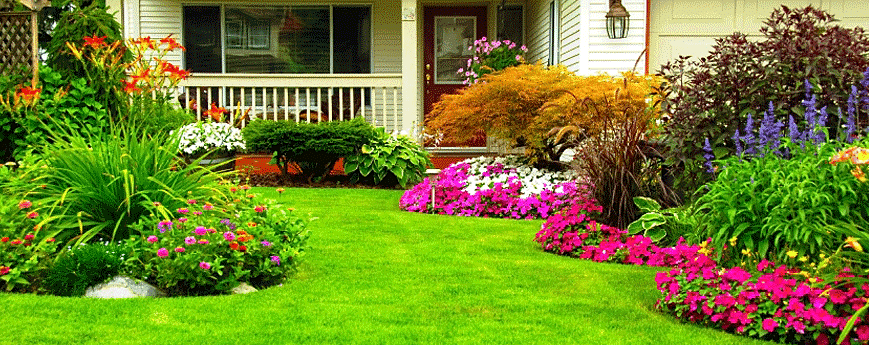Modern landscaping includes tons of options that have very little concern for the environment. Water usage and fertilization of imported tropical plants or even just a tough to manage landscape can contribute unnecessary waste of scarce resources. If you're an eco-conscious homeowner that doesn't want to sacrifice curb appeal for warm and fuzzies, these 10 tricks are just what you need!
- Build a border. Plant a bed of "thirsty" plants along pathways, curbs, and other hardscapes. By building these beds you will retain more water in your lawn, reduce topsoil erosion, and soften those hard edges adding to the aesthetic appeal of your landscape.
- Start smart. Before you start planting anything, consider where water will naturally flow or pool on your property. Planting thirsty plants in natural depressions is a quick way to save on watering, since gravity will do most of the work for you.
- Use pots or planters. If you plan on planting tropical specimens that require frequent watering, consider using large pots, lined flower beds, or other contained growing areas. These containers trap far more moisture than open topsoil, and can often add depth to your garden area. Even when planting drought tolerant specimens, contained growing areas will lower your environmental footprint.
- Carve the lawn. Grass requires a significant amount of water every day just to survive. By sculpting your landscape to include hardscaped patio areas or perhaps a zen garden you can massively reduce its water requirement.
- Go with gravel. When installing paths, patios, or other outdoor structures that require sturdy walking surfaces, consider using gravel, or flagstone set in sand. A permeable surface will allow excess rainwater to be absorbed into the soil beneath instead of washed out into the street to be contaminated with debris and pollution.
- Desert dreams. Choosing to build a cacti garden, or arid landscape can save you massive amounts of time in maintenance, and permanently eliminate watering the lawn from your honey-do list. Plus, with it being such an uncommon choice in the Atlanta metro, anyone with the confidence to go with a desert themed landscape here is sure to turn heads.
- Stop-loss with Moss. If you still want the green grass aesthetic but are environmentally conscious, cultivating moss as groundcover is the way to go. Moss is drought tolerant once it's established, has no negative impact on soil, and churns out oxygen far faster than grass. Throw a few boulders in your yard, maybe a flagstone path, and moss groundcover and you'll have a low maintenance, low-impact landscape with a fairytale look.
- Mediterranean motiffe. The Mediterranean climate naturally produces drought tolerant plants. If the subdued colors of a Mediterranean garden don't appeal to you, try brightening it up with lavender or give it rich borders with a few Ilex crenata.
- Mulch Mulch Mulch! Covering your planting areas with 2 to 3 inches of quality mulch will not only discourage weeds from intruding into your beds and protect your plants, but it also significantly slows evaporation. By slowing water loss, your plants will have more time to absorb the moisture that's naturally deposited by rain and humidity, reducing your need to water.
- Mycorrhizal fungi. Mycorrhizal fungi grow on and between the roots of plants, enhancing their ability to absorb water and nutrients from the surrounding soil. Mycorrhizal deficient topsoil puts unnecessary stress on plants and allows valuable water and nutrients to seep deeper into the ground, beyond the reach of your plants' roots. You can buy mycorrhizal fungi spores at most nurseries and landscape supply retailers.
Check out our other pages to learn more and review our ratings!

No comments:
Post a Comment